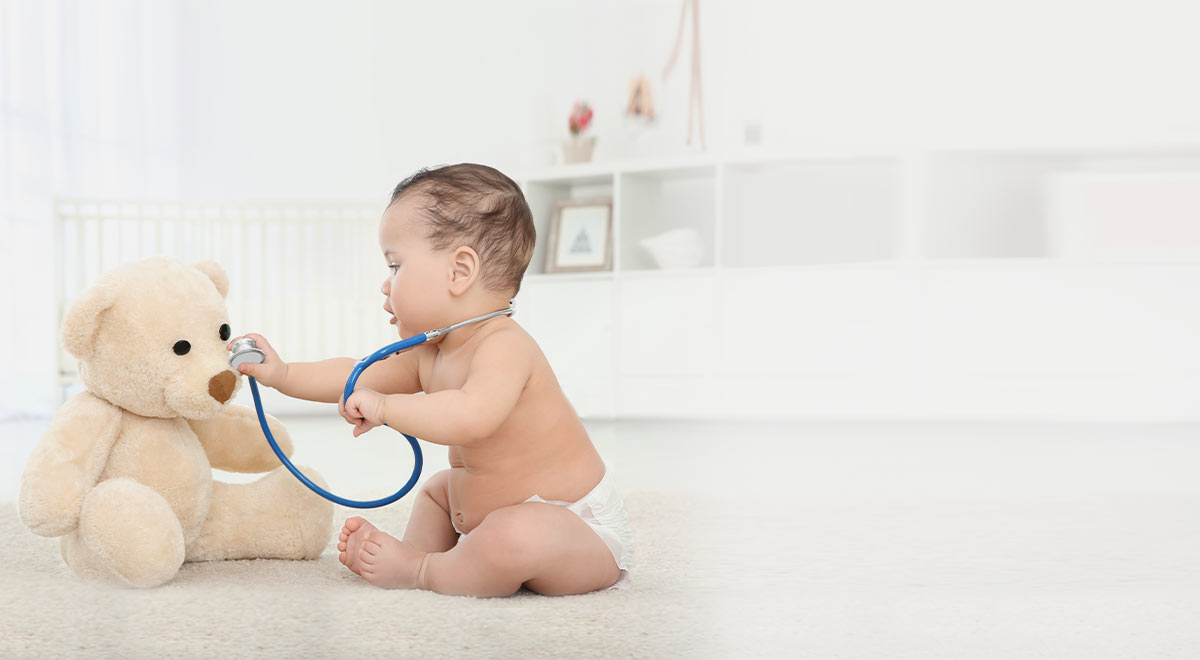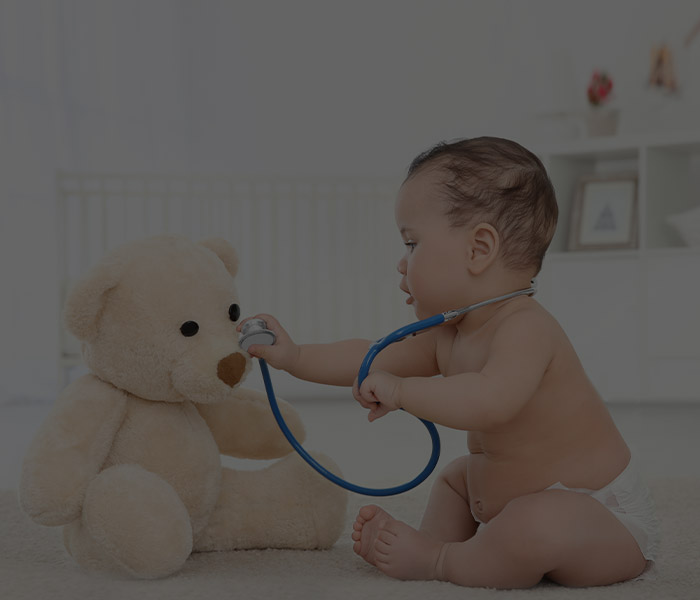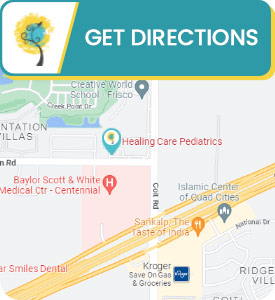4 Questions to Ask About Physical Exams at Healing Care Pediatrics
Pediatric physical examinations are crucial for tracking a child’s development and growth. A thorough examination of the head, neck, chest, belly, heart, lungs, and limbs is part of these assessments. Early detection of possible health problems with these examinations enables prompt intervention and better results. At Healing Care Pediatrics, our board-certified Dr. Khanum Saleha specializes in conducting comprehensive physical examinations for children of all ages. For more information, please contact us or request an appointment online. We serve patients from Frisco, TX and surrounding areas.


Table of Contents:
What is involved in a physical examination?
What are the key elements of a physical examination?
How does a medical exam differ from a physical exam?
What steps should I take to prepare for a physical exam?
The physical examination begins by obtaining a detailed medical history of your child. Checking your child’s vital signs is the first step in a physical examination. This includes measuring their blood pressure, heart rate, respiration rate, and body temperature.
The cardiovascular examination includes listening to your child’s heart and lungs for signs of potential heart disease or respiratory issues.
In the pulmonary examination, we will listen to your child’s lungs for any abnormal sounds and conduct percussion of the chest to assess lung density and expansion, along with feeling the chest wall for any tenderness or masses.
The gastrointestinal examination involves listening to your child’s abdomen for any unusual bowel sounds and palpating different areas to check for organ size, shape, and potential pain.
We may also conduct a genital examination, checking the external genitalia for any discharge, edema, or redness. The physical examination also typically includes a neurological exam, involving a series of tests designed to assess your child’s mental status, speech, reflexes, strength, sensation, coordination, and pupillary response.
The musculoskeletal examination involves inspecting your child’s joints for any swelling, redness, or deformities, testing the range of motion to assess joint function, and palpating the joints and muscles for any tenderness or weakness.
Finally, we may conduct checks on your child’s thyroid gland for any enlargement or abnormalities. We will also likely discuss your child’s lifestyle habits, such as nutrition, sleeping habits, and level of physical activity. Mental health, including any feelings of stress, anxiety, or depression, is also addressed.
The first component is gathering a health history or conducting an interview. This involves collecting all necessary information about the child’s medical history, lifestyle habits, past illnesses or surgeries, allergies, and current medications.
The vital signs assessment is the second element, where the team checks the child’s blood pressure, heart rate, respiratory rate, body temperature, and oxygen saturation.
The third component is a general appearance assessment or inspection. To do this, the child’s body must be carefully examined visually, including aspects such as skin color, posture, mobility, hair, nails, and personal hygiene.
The physical exam itself makes up the fourth component, which includes palpation, percussion, and auscultation. We use these techniques to assess the properties of various body structures, the density and integrity of underlying structures, and to listen to sounds produced by the heart, lungs, and abdomen.
The fifth component is the neurological examination. This includes a series of tests that assess brain function, reflexes, sensation, and balance, checking for signs of neurologic damage or abnormalities.
The sixth component includes laboratory tests, screenings, and rectal and pelvic examinations where applicable. The laboratory tests can provide additional information for diagnosis and management of the child’s health condition.
Finally, health promotion is a vital aspect of the physical exam. This involves discussing preventive measures to maintain or improve the child’s health, including advice on diet, exercise, stress management, vaccinations, and specific screenings based on the child’s age and gender.
The terms medical exam and physical exam have distinct meanings, even though they’re often used interchangeably in everyday conversation. Both forms of evaluation are critical to the comprehensive healthcare services we provide for your child, offering valuable insights into their overall health status.
A medical exam refers to a detailed and comprehensive health check-up conducted for various reasons, such as diagnosing a specific issue, monitoring an existing health condition, or as part of a routine health check-up. This type of examination provides a holistic assessment of your child’s health and typically involves a series of tests, for example, imaging studies, blood tests, or other diagnostic procedures.
Purpose:
● Assess the overall health and well-being of your child.
● Determine any possible health issues or risk factors.
● Track progress of known medical conditions.
● Provide preventive care and screenings.
● Create a baseline for next medical evaluations.
Components:
● Medical history review: This includes questions about symptoms, past medical history, family health history, medications, and lifestyle factors.
● Physical examination: This involves checking vital signs, performing a full-body checkup, and evaluating specific areas of concern based on symptoms or health history.
● Laboratory tests: To evaluate your child’s blood chemistry, organ function, or other health factors, these tests may involve imaging studies, blood tests, or urine tests.
A physical exam, on the other hand, is a specific component of a medical exam that focuses primarily on an examination of the physical aspects of a child’s body. This is usually part of a routine health check-up and is performed to prevent or detect health issues early.
Purpose:
● Detect physical abnormalities or injuries.
● Assess mobility, range of motion, and flexibility.
● Evaluate skin, eyes, ears, nose, throat, and musculoskeletal system.
● Monitor vital signs (blood pressure, heart rate, temperature).
● Eliminate or validate medical disorders
Components:
● Inspection: Visual assessment of your child’s body, including skin, hair, nails, and overall appearance.
● Palpation: Feeling your child’s body for tenderness, swelling, or abnormalities.
● Auscultation: Listening to sounds from your child’s heart, lungs, and abdomen using a stethoscope.
● Percussion: Tapping on your child’s body to assess underlying structures or detect fluid.
● Range of motion and flexibility tests: Evaluating your child’s joint flexibility and muscle strength.
A physical exam is an integral part of maintaining your child’s health and detecting potential health issues early on. We strive to provide comprehensive and personalized care for your child. To help you get ready for your child’s physical examination, here is a guide:
Before the Exam:
● Visit our website to book your appointment with Dr. Saleha. Remember to bring your child’s health insurance information and identification to the appointment.
● The exam enables our doctor to assess your child’s overall health, growth, and development and identify any potential health concerns. Encourage your child to be open and honest during the examination.
● Compile your child’s medical history, including any relevant family medical history. This information will help understand any potential risks or ongoing health concerns.
● Make a list of all prescription and over-the-counter medications your child is taking, including dosage and frequency.
● Make a note of any health concerns or changes you’ve noticed in your child, even if they seem minor.
● If your child needs to undergo certain tests, such as blood work, we might instruct you to make your child fast.
● Ensure your child is wearing loose, comfortable clothing. Don’t apply creams or lotions the day of the test, as these can interfere with certain tests.
During the Exam:
● Provide accurate and complete information about your child’s health history, symptoms, and current concerns.
● Don’t hesitate to ask questions or voice any concerns you have. We are here to address your needs and provide guidance.
● Pay attention to our doctor’s instructions and ask for clarification if needed.
● Your child may be asked to remove certain clothing or lie in a specific position for the exam. Cooperate with our requests to ensure a thorough examination.
After the Exam:
● Ask about the outcomes of any tests or treatments carried out during the examination.
● If necessary, schedule a follow-up appointment to discuss any additional concerns or treatment plans.
● Encourage healthy habits in your child, such as stress reduction, frequent exercise, and a balanced diet.
● Proper rest is essential for your child’s overall health and well-being.
These guidelines can help you get ready for your child’s physical examination and ensure they receive the best care possible. Making the most of your child’s physical examination requires preparation. For more information, please contact us or book an appointment online. We serve patients from Frisco TX, Prosper TX, The Colony TX, Allen TX, Fairview TX, and surrounding areas.




